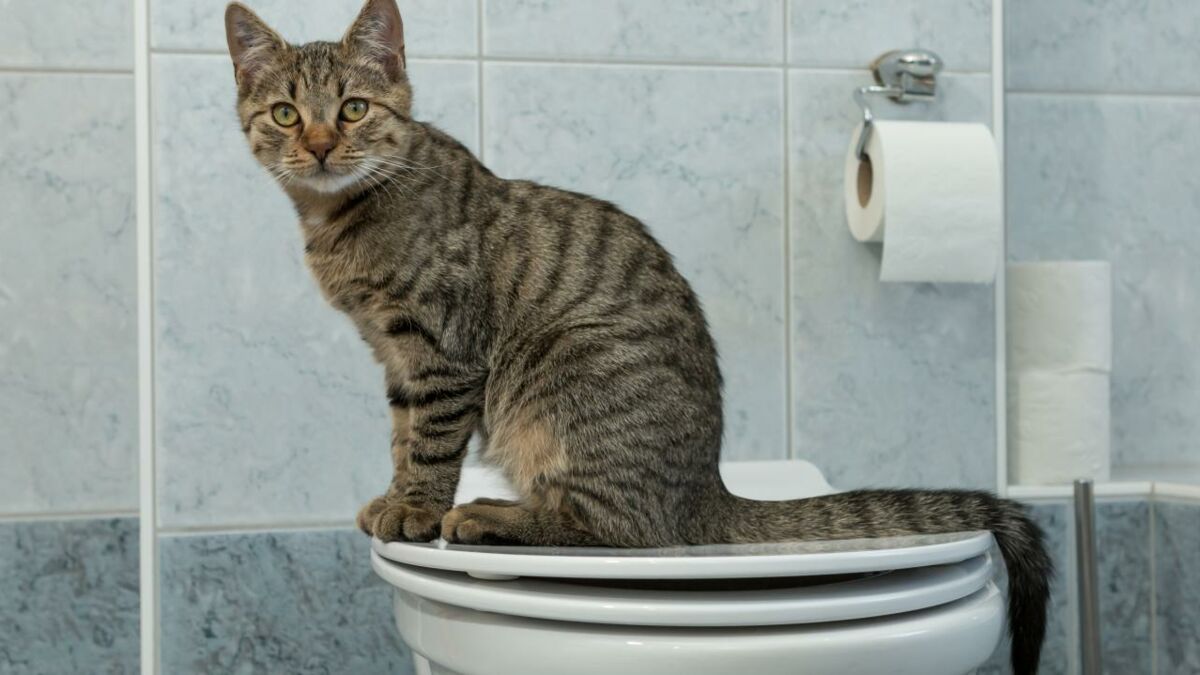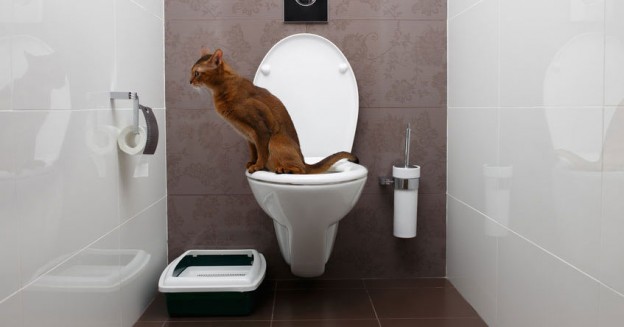Leading Causes to Prevent Flushing Animal Waste Down the Toilet
Leading Causes to Prevent Flushing Animal Waste Down the Toilet
Blog Article
What are your opinions about Don't Flush Your Pets Poo Down The Loo, Vet Warns?

When it comes to getting rid of waste, particularly animal waste, many individuals usually turn to the practical option of flushing it down the bathroom. Nevertheless, this apparently simple option can have significant repercussions for the environment and public health. In this article, we'll check out why flushing pet waste down the toilet is a poor idea and supply different methods for proper disposal.
Introduction
Proper waste disposal is critical for maintaining environmental sustainability and public health. While it might seem harmless to flush animal waste down the toilet, it can lead to different issues, both for the atmosphere and human wellness.
Dangers of flushing animal waste
Ecological impact
Purging animal waste presents hazardous bacteria and microorganisms into waterways, which can adversely impact marine ecological communities. These microorganisms can contaminate water sources and damage aquatic life, interfering with fragile environments.
Public health issues
Animal waste has unsafe bacteria such as E. coli and Salmonella, which can posture serious health and wellness threats to people. Purging animal waste down the bathroom can infect water materials, leading to the spread of conditions and infections.
Alternatives to flushing
Instead of purging pet waste down the toilet, there are several alternative disposal approaches that are much more eco-friendly and hygienic.
Composting
Composting animal waste is a green way to take care of it. By composting, raw material is broken down into nutrient-rich soil, which can be utilized to feed yards and plants.
Landfill disposal
Disposing of animal waste in a land fill is an additional option. While not as environmentally friendly as composting, it is a much safer choice to flushing, as it prevents the contamination of water resources.
Animal waste disposal systems
There are specific pet garbage disposal systems readily available that safely and hygienically deal with animal waste. These systems frequently make use of enzymes to break down waste and remove odors.
Steps to proper animal garbage disposal
To guarantee proper disposal of pet waste, follow these steps:
Scooping and bagging waste
Routinely scoop and bag pet waste using biodegradable bags. This stops waste from infecting the atmosphere.
Utilizing marked waste bins
Dispose of bagged animal waste in designated waste bins, such as garden compost bins or land fill containers. Avoid flushing it down the toilet in all costs.
Cleaning can and animal areas regularly
Frequently tidy can and family pet locations to avoid the buildup of waste and bacteria. Usage pet-safe cleansing products to maintain hygiene.
Advantages of appropriate disposal methods
Adopting appropriate disposal methods for animal waste provides a number of benefits:
Lowered environmental pollution
Proper disposal techniques reduce the risk of environmental pollution, safeguarding rivers and environments from contamination
Minimized danger of water contamination.
By staying clear of flushing pet waste down the bathroom, the danger of water contamination is significantly minimized, protecting public health.
Improved sanitation and hygiene
Proper disposal methods promote much better cleanliness and health, developing a more secure atmosphere for both humans and pets.
Final thought
Finally, purging animal waste down the commode is harmful to the atmosphere and public health. By adopting different disposal techniques and following correct waste management practices, we can reduce the negative influence of animal waste and add to a cleaner, much healthier planet.
What To Do With Dog Poo – The Do's And Don'ts Of Disposing Of Faeces
Dog poo bins
Some councils provide dedicated dog waste bins in popular dog-walking areas that can take dog poo that has been bagged but you can legally dispose of dog waste in any public litter bin, as long as it is securely bagged. This also applies to your wheelie bin at home.
Do not flush
Water companies do not recommend flushing dog faeces down the toilet because certain parasites can survive the water processing treatment and are potentially harmful to humans. You should also never consider flushing dog poo that has been bagged down the toilet as the bags will not break down and instead create severe blockages in the sewage system.
In the woods
The Forestry Commission promotes a ‘stick and flick’ method for dealing with waste in the woods. This means finding a stick and using it to flick any poo from off the path so that it is out of the way of other walkers. You could also bury it as long as it is not in an area where there might be livestock.
Livestock
Parasites found in dog poo can be transmitted to livestock if they inadvertently eat infected faeces that has been left on grazing land. This could result in the death of sheep or abortion in cattle so you should always make sure you pick up your dog’s waste in fields where livestock could be present.

Frequently tidy can and family pet locations to avoid the buildup of waste and bacteria. Usage pet-safe cleansing products to maintain hygiene.
Advantages of appropriate disposal methods
Adopting appropriate disposal methods for animal waste provides a number of benefits:
Lowered environmental pollution
Proper disposal techniques reduce the risk of environmental pollution, safeguarding rivers and environments from contamination
Minimized danger of water contamination.
By staying clear of flushing pet waste down the bathroom, the danger of water contamination is significantly minimized, protecting public health.
Improved sanitation and hygiene
Proper disposal methods promote much better cleanliness and health, developing a more secure atmosphere for both humans and pets.
Final thought
Finally, purging animal waste down the commode is harmful to the atmosphere and public health. By adopting different disposal techniques and following correct waste management practices, we can reduce the negative influence of animal waste and add to a cleaner, much healthier planet.
What To Do With Dog Poo – The Do's And Don'ts Of Disposing Of Faeces
Dog poo bins
Some councils provide dedicated dog waste bins in popular dog-walking areas that can take dog poo that has been bagged but you can legally dispose of dog waste in any public litter bin, as long as it is securely bagged. This also applies to your wheelie bin at home.
Do not flush
Water companies do not recommend flushing dog faeces down the toilet because certain parasites can survive the water processing treatment and are potentially harmful to humans. You should also never consider flushing dog poo that has been bagged down the toilet as the bags will not break down and instead create severe blockages in the sewage system.
In the woods
The Forestry Commission promotes a ‘stick and flick’ method for dealing with waste in the woods. This means finding a stick and using it to flick any poo from off the path so that it is out of the way of other walkers. You could also bury it as long as it is not in an area where there might be livestock.
Livestock
Parasites found in dog poo can be transmitted to livestock if they inadvertently eat infected faeces that has been left on grazing land. This could result in the death of sheep or abortion in cattle so you should always make sure you pick up your dog’s waste in fields where livestock could be present.

Do you really like reading up on Should you flush animal waste down the toilet? Try leaving a remark down the page. We would be happy to listen to your views about this page. We are looking forward that you come back again in the future. Sharing is caring. You won't know, you may very well be helping someone out. Many thanks for taking the time to read it.
Additional Resources Report this page